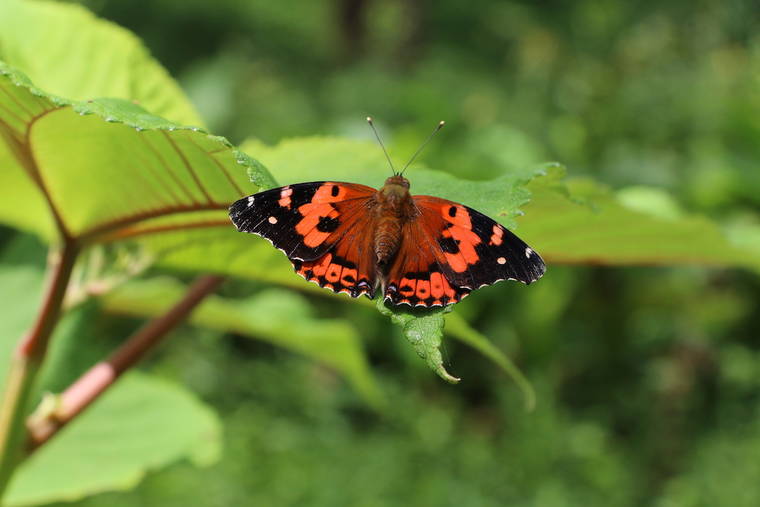Kamehameha butterfly decline in Hawaii likely due to non-native predators


COURTESY DLNR
The Kamehameha butterfly is one of only two native species of butterflies in Hawaii.


What is killing caterpillars on Oahu before they have a chance to grow and transform into Kamehameha butterflies?
State researchers believe, based on remote camera footage in Manoa, that introduced predators — primarily non-native birds — are feeding on the caterpillars before they have a chance to develop into butterflies.
“The Kamehameha butterfly has been declining in a lot of its historical range, particularly in the southern Koolau Mountains on Oahu, where it no longer occurs naturally,” said state entomologist Will Haines in a news release. “It seems to be good habitat but one of the challenges we are seeing is the presence of so many introduced predators. We’re trying to figure out which of the predators is responsible for the decline. It seems to mostly affect the caterpillar stage of the butterfly.”
The Kamehameha butterfly Opens in a new tab, Hawaii’s official state insect, is orange, black and white, with a fuzzy body, and smaller than the Monarch butterfly. They also fly faster.
Haines, who is with the state Division of Forestry and Wildlife and Jana Maravi from the nonprofit environmental group, Kupu, are working to re-establish Hawaii’s population of Kamehameha butterflies — one of only two butterflies native to Hawaii.
They regularly hike into a protected restoration area at Manoa Cliffs to place caterpillars of the Kamehameha butterfly onto native mamaki plants, their most common food source.
Don't miss out on what's happening!
Stay in touch with breaking news, as it happens, conveniently in your email inbox. It's FREE!
Footage from remote cameras and digital video recorders set up in trees are showing that non-native, introduced birds are the likely culprits, along with some ant species that Haines said are “very bad predators” of the caterpillars.
Video evidence of ants as suspected predators at Manoa Cliffs is limited, but researchers believe at other locations, they are eating the caterpillars before they fully develop into butterflies.
Although the Kamehameha butterfly is not currently listed as an endangered or threatened species, it faces plenty of threats, including loss of habitat and predation. The butterfly still dwells on most of the main Hawaiian islands, but its range has shrunk on every island.
Today, there are few accessible places left on Oahu where they can still be viewed in the wild, and they no longer occur naturally in the southern Koolau range.
“They are definitely not as abundant as they used to be,” said Haines. “If we can figure out the predator piece of the puzzle, hopefully we can take steps to reduce the trend.”
He added that it was not just a matter of planting host plants, but providing suitable habitat and protecting the caterpillars and butterflies from the introduced predators that are preying on them.
A children’s book, “Butterfly for a King” by illustrator Susan L. Roth and author Cindy Trumbore about the history and research of the Kamehameha butterfly and how it became Hawaii’s state insect after fifth-graders successfully campaigned for Opens in a new tabit Opens in a new tab, has also just been released.




